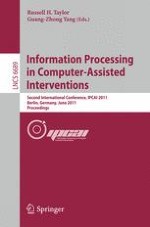This book constitutes the proceedings of the Second International Conference on Information Processing in Computer-Assisted Interventions IPCAI 2011, held in Berlin, Germany, on June 22, 2011. The 17 papers presented were carefully reviewed and selected from 29 submissions. The focus of the conference is the use of information technology in interventional medicine, including real-time modeling and analysis, technology, human-machine interfaces, and systems associated with operating rooms and interventional suites. It also covers the overall information flow associated with intervention planning, execution, follow-up, and outcome analysis; as well as training and skill assessment for such procedures.
